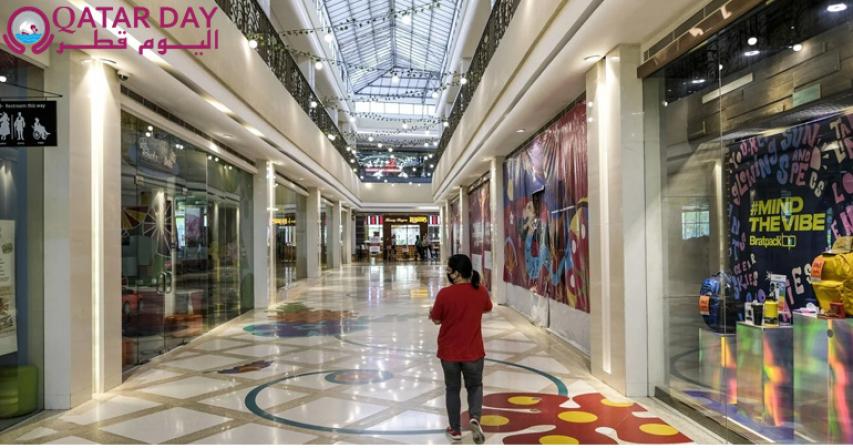Over the past five years, summertime has been one of the busiest seasons for Patty Marabut, who co-owns a dessert shop called The Lost Bread. Its Instagram-worthy concoctions often draw long queues at its branches in and out of Metro Manila in the Philippines.
This year, however, Marabut’s anticipated sales melted away as Covid-19 forced most of her would-be patrons to stay home. “Before the pandemic, we’d done several studies on how to transport our products and came to the conclusion that it was best to not offer delivery to maintain product quality,” she said – but the small business was left with no choice.
The Lost Bread transitioned to delivering tubs of ice cream to stay afloat and keep most of its staff employed. “It would be very hard for food businesses inside malls to thrive during these times,” Marabut said. “Consumers have been very hesitant to visit the malls orstay inside for a long period.”
In a nutshell, that is the predicament afflicting shopping centre tenants as well as operators. When the government partially eased lockdown restrictions in June, the operators hoped Filipinos would flock back to shopping centres – but by August, it became apparent that a resumption of pre-pandemic shopping habits remained some distance in the future.
Visits to retail establishments across the Philippines fell an average of 55 per cent between February and July, according to Google’s Community Mobility Report. In Manila, the capital, visits slipped 68 per cent over that period – a huge blow to an economy that heavily relied on household spending.
In the archipelagic country, there is more than one shopping centre for every city and province, while the count in Metro Manila alone rivals that of similarly mall-heavy Bangkok. According to property consultancy Colliers International, as of the first quarter of this year, there were 7.3 million square metres of retail space in Metro Manila – about 35 Empire State Buildings, and close to Bangkok’s 7.7 million square metres.
While sales draw crowds every month to major malls, most customers now go shopping with the intent to make a particular purchase instead of just browsing, according to Jonjon San Agustin, senior vice-president of the Philippines’ largest retail operator, SM Supermalls, which has 74 centres around the country.
“We were initially hoping foot traffic would go back to normal levels when restrictions eased in June, just like our malls in China,” San Agustin said, referring to the seven outlets SM Supermalls has on the mainland. “Here, they just go to groceries or the pharmacies.”
Playing a part in this changed consumer behaviour is the Philippines’ high number of Covid-19 cases – it has more than 200,000 confirmed infections, the most in Southeast Asia, and over 3,100 deaths.
Access to malls is also impeded by patchy public transport services after the lockdown, while many Filipinos’ financial capacity has also been affected. Earlier this month, the government reported that 27 million adults are now unemployed, with the country suffering its first recession in almost three decades.
The situation has forced shopping centre operators to embrace digital solutions, ranging from personal shopping services to deliveries, to help their tenants.
San Agustin said that as of August, the company had partnered with at least 67 start-ups that offered delivery and online order services, while the company had an in-house personal shopping service.
A mall tenant who agreed to speak anonymously said SM Supermalls is building an e-commerce platform that would turn its malls into fulfilment hubs, directly competing against giants like Lazada and Shopee.
Robinsons Malls, the second-largest retail operator in the country with 52 shopping centres nationwide, has also ventured into these services. “Tenant sales were just a fraction of pre-Covid-19 numbers,” said Arlene Magtibay, senior vice-president of Robinsons Land Corporation. “Many [retailers] needed help, particularly in the fulfilment process.”
Other operators are also getting in on the act. Megaworld Corporation, which operates 24 malls, has started building an e-commerce delivery app called Pickaroo. Meanwhile, Vistamalls, which has more than 20 locations, has introduced a logistics service that not only supports its tenants, but also accepts service requests from small businesses outside its malls.
To attract consumers, mall operators are keeping delivery fees competitive with those of existing logistics start-ups such as regional giants Lalamove and Grab, which have base fares of 80 US cents and US$1.20 respectively. Robinsons’ and SM Supermalls’ in-house services have a starting delivery fee of around US$2 for shipments anywhere in Metro Manila.
These moves are in line with what analysts say is an imminent need for the industry to innovate to survive this year. According to Colliers, the Philippine retail real estate industry will suffer a 12 per cent vacancy rate by December, its highest in the past decade.
“Digitalisation will likely not help drive foot traffic … [but] the hope is the [customer] traffic generated from online platforms will go directly to tenants and not to smaller sellers online,” said Roy Golez, research and consultancy director at Leechiu Property Consultants.
Some retailers might now also start exploring the possibility of turning vacant spaces into offices or warehouses, according to Colliers senior research manager Joey Bondoc.
Magtibay of Robinsons Land said the company was now looking into repurposing some shopping centre spaces into “fulfilment centres for e-commerce”, while Bloomberg recently reported that Ayala Land, which operates 38 malls nationwide, had been studying the same possibility.
In the post-pandemic world, shopping centre operators are preparing for this new consumer behaviour to remain for the long haul. “Convenience is the ‘new experience’. If before, most strived to have something new to offer to customers, now we just have to ensure they feel safe and secure in staying in our malls,” said San Agustin of SM Supermalls.
As to how shopping centres will handle shoppers’ growing affinity for online retailing, San Agustin is hopeful they will go back to their old ways. “Filipinos love gatherings. We are highly social,” he said. “I believe the market’s mall-going ways will be back.”

Comments